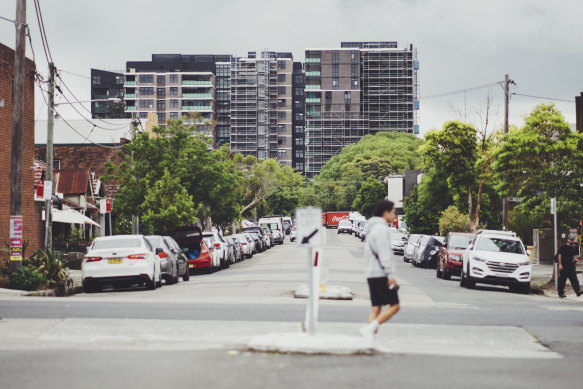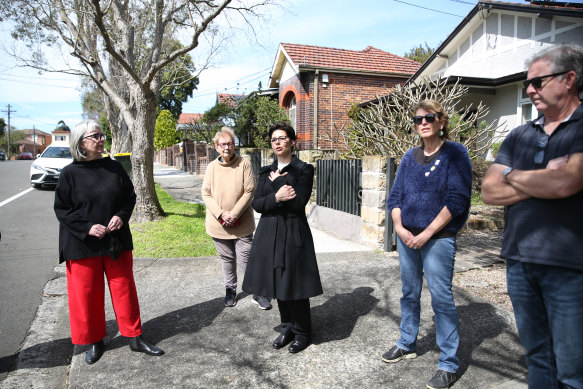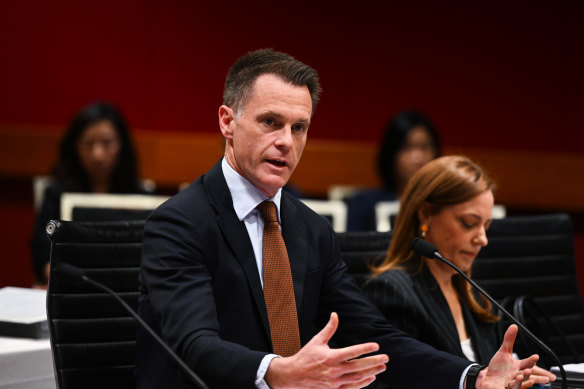This was published 9 months ago
Inner West Council moves to reduce light, parking and floorspace rules for apartments
New apartments in Sydney’s inner west would have fewer requirements for direct sunlight, parking and minimum size under a council plan to address the housing crisis by making it easier to build.
Labor, which retained control of Inner West Council at last month’s election, will bring a motion to next week’s meeting proposing to enact controversial recommendations from a recent Productivity Commission report on ways to improve the feasibility of new homes.

Apartments in Sydney’s inner west.Credit: Dion Georgopoulos
The councillors want to “consider the relaxation of non-safety related restrictions on design, including solar access and minimum apartment size requirements”, replacing them with guidelines, and remove car parking minimums in apartment blocks.
The motion also calls for a “clearing house” to escalate and resolve bottlenecks in the development approval process, and to delay payment of developer infrastructure contributions until the building is certified for occupation.
“Like all other councils, we know we have to do better to address the housing crisis,” Labor’s Jessica D’Arienzo said. “We are looking at what we can do to deliver more homes quickly in the inner west.”
The move comes as a separate consultation of inner west residents recorded majority support for higher density around train stations at Ashfield (61 per cent), Croydon (51), Dulwich Hill (52) and Marrickville (55). In each case, about another quarter of respondents were slightly or moderately supportive of higher density, while another quarter were entirely against.

Labor councillor Jess D’Arienzo in 2022 speaking to residents of Dulwich Hill opposed to higher density housing.Credit: James Alcock
As a well-connected and desirable place to live, the inner west is at the centre of Sydney’s housing density debate, especially as Dulwich Hill and Marrickville stations become metro services by the end of next year, with trains to the city and north every four minutes.
Of the survey’s 1221 participants, 49 per cent also completely or “very much” supported increased density around light rail stations. A further 29 per cent supported it slightly or moderately, and 21 per cent were against.
Renters were under-represented in the survey (they made up 15 per cent of respondents, while 43 per cent of the inner west rents) as were people under 30.
D’Arienzo said the strong support for higher density demonstrated people’s appreciation of the depth of the housing crisis. “As a council, it gives us the opportunity to enact to bold change”.
However, the push to relax apartment design rules will likely meet resistance given the hostile reception the NSW Productivity and Equality Commission’s recommendations received from architects and other stakeholders.
That report, released last month, urged the state government to “as a priority” restrict the use of design panels and competitions for new buildings, and “relax design-related requirements in the Apartment Design Guide that weigh on feasibility, such as car parking, solar access, and minimum apartment size requirements”.
The commission said while such attributes were desirable, not all NSW residents could afford them, or wished to pay for them. “Many people value these features but are willing to forgo one or more of them to live in a more desirable location,” it said.
Critics such as the Committee for Sydney think tank warned removing the sunlight requirements would create “a future full of apartments with dead plants”, while UNSW professor and apartment expert Phil Oldfield said it risked creating two tiers of units: warm and healthy, or cold and dark.

Premier Chris Minns has indicated he will take action on the Productivity Commission’s advice, but hasn’t detailed the government’s response.Credit: Janie Barrett
The NSW government has leaned heavily on the Productivity Commission for its housing policy, with Premier Chris Minns frequently citing warnings from commissioner Peter Achterstraat that Sydney risked becoming “a city with no grandchildren” if housing costs did not moderate.
But the government has not yet agreed to implement the design recommendations. Minns has said the report “gives us food for thought on where we can go further, and that’s something we’re going to be making changes on”.
D’Arienzo would not engage directly with questions about sunlight, saying staff would generate a report with options first. “It really is important to assess it through a local lens [and] consider all options,” she said.
Labor’s move was praised by the housing advocacy group Sydney YIMBY, or Yes In My Backyard. Spokesperson Melissa Neighbour said it was an overdue recognition of the role councils play in speeding up approvals.
“An apartment building which took a three-page DA in 1967 now takes over 700. It’s clear we’ve created too much planning bureaucracy and this is a welcome step,” she said.
But the Greens, the main opposition to Labor in the inner west, said adopting the measures would sacrifice quality of living.
“Housing justice means building homes people actually want to live in, not tiny rooms with no sunlight,” said newly elected Greens councillor Izabella Antoniou.